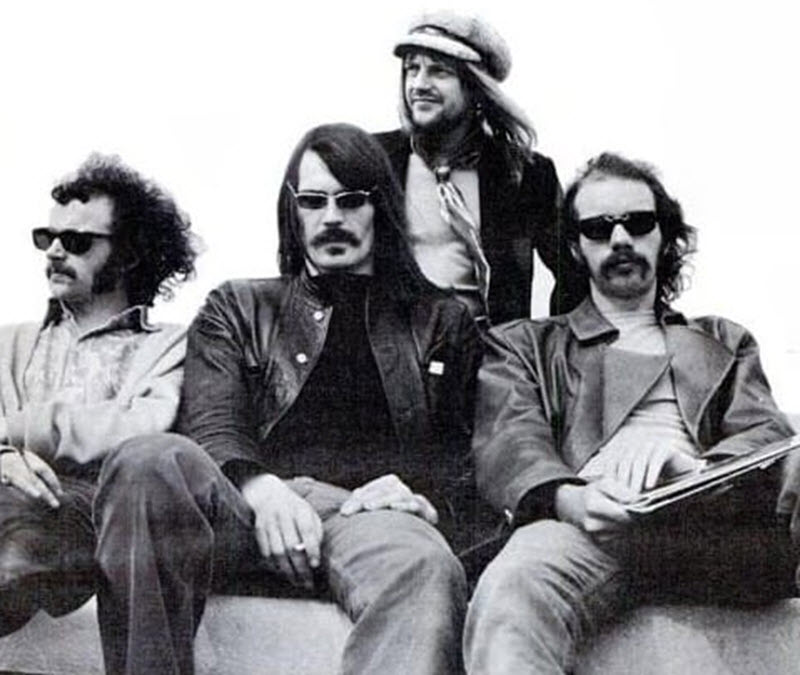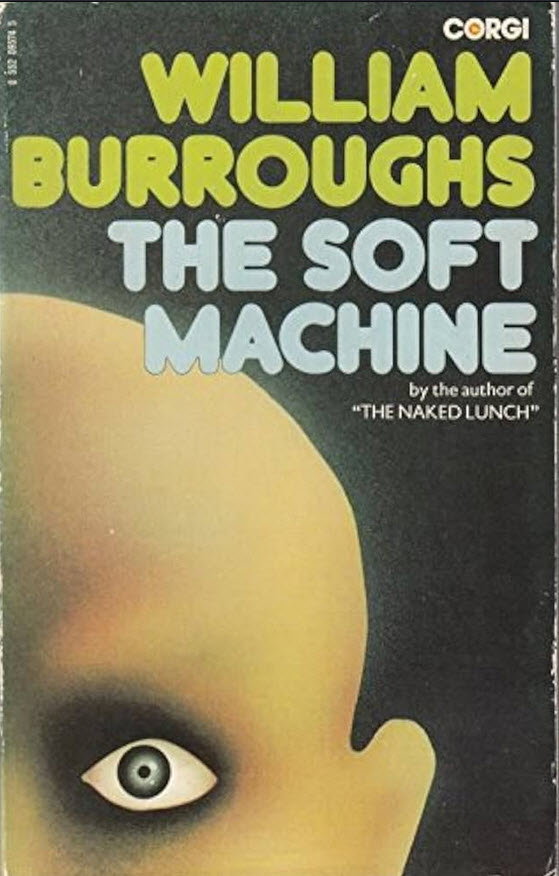Pioneers of Psychedelic and Progressive Rock
Soft Machine is a British rock band formed in 1966 in Canterbury, England. The band was part of the influential Canterbury scene and is known for its pioneering contributions to genres such as psychedelic rock, progressive rock, and jazz fusion. The original lineup featured Robert Wyatt (drums and vocals), Kevin Ayers (bass and vocals), Daevid Allen (guitar), and Mike Ratledge (keyboards).
Though they never achieved any remarkable commercial success, Soft Machine’s innovative approach to music, willingness to experiment, and contributions to the Canterbury scene have left an indelible mark on the history of modern music. With a catalog of influential albums and a roster of talented musicians, Soft Machine remains a key figure in the evolution of both contemporary rock and jazz music.
The band was named after the novel “The Soft Machine” by William S. Burroughs, the book which coined the term “heavy metal kid”.

The Canterbury Scene
Soft Machine emerged from the vibrant Canterbury scene, a musical movement known for its blend of rock, jazz, and avant-garde influences. This scene produced several other notable bands, including Caravan and Gong, and was characterized by its experimental approach to music.
Debut Album and Early Success
In 1968, Soft Machine released their self-titled debut album, “The Soft Machine.” The album showcased their eclectic mix of psychedelic rock, jazz influences, and experimental sounds. Tracks like “Hope for Happiness” and “Joy of a Toy” highlighted their innovative approach and complex compositions.
Lineup Changes and Evolution
Throughout their career, Soft Machine underwent numerous lineup changes, which significantly influenced their musical direction.
The founding members were Mike Ratledge, Robert Wyatt, Kevin Ayers, Daevid Allen and Larry Nowlin.
Daevid Allen left the band early on, forming Gong, and Kevin Ayers departed after their first US tour, leading to a more jazz-oriented direction. Hugh Hopper replaced Ayers on bass, and the band began to incorporate more improvisational elements.
Examples of other musicians that have been a part of the Soft Machine lineup are Andy Summers, Elton Dean, John Marshall, Karl Jenkins, Roy Babbington, and Allan Holdsworth.
At the time of writing, the group consist of John Etheridge, Theo Travis, Fred Thelonious Baker, and Asaf Sirkis.
Landmark Albums
“Volume Two” (1969)
The second album, “Volume Two,” saw Soft Machine expanding their sound with longer, more intricate compositions. This album marked the beginning of their transition from psychedelic rock to a more jazz fusion style.
“Third” (1970)
“Third” is often considered Soft Machine’s masterpiece. It was a double album featuring four extended tracks, each occupying one side of a vinyl record. This album showcased their full embrace of jazz fusion, with complex structures, extensive improvisation, and a strong emphasis on instrumental virtuosity.
“Fourth” (1971)
“Fourth” continued the band’s exploration of jazz fusion, with a more abstract and experimental approach, highlighting the band’s prowess in blending rock and jazz elements seamlessly. Soft Machine had become a purely instrumental band by this point and this album is entirely instrumental.
Later Years and Reformation
Soft Machine continued to evolve and release music through the 1970s and beyond, with various lineup changes and shifts in musical direction. They explored different facets of jazz, rock, and experimental music, maintaining a reputation for innovation and creativity.
In the late 1990s and 2000s, former members of Soft Machine reformed under different iterations, such as Soft Machine Legacy, continuing to perform and record new material. These projects helped keep the spirit of the original band alive, attracting both old fans and new audiences.
Influence and Legacy
Soft Machine’s influence extends beyond their own recordings. They were instrumental in the development of progressive rock and jazz fusion, influencing a wide range of artists in both genres. Their willingness to experiment with form, structure, and genre boundaries paved the way for future generations of musicians – including experimental rock musicians exploring and developing various genres under the rock umbrella.
Examples of Notable Members
Robert Wyatt
Robert Wyatt was a founding member of Soft Machine, known for his distinctive drumming and unique vocal style. After leaving the band in 1971, he pursued a successful solo career and remains a highly respected figure in the music industry.
Kevin Ayers
Kevin Ayers’ contributions to Soft Machine’s early work were significant. After leaving the band, he enjoyed a prolific solo career, producing a series of acclaimed albums that continued to explore the boundaries of rock and pop.
Mike Ratledge
Mike Ratledge’s keyboard work was a defining element of Soft Machine’s sound. His innovative use of organ and electric piano helped shape the band’s distinctive fusion of rock and jazz.
Hugh Hopper
Hugh Hopper’s bass playing brought a new dimension to Soft Machine’s music. His intricate bass lines and experimental approach to composition were integral to the band’s evolution into jazz fusion.
The Book After Which the Band is Named

The band Soft Machine took their name from the 1961 William S. Burroughs novel The Soft Machine; the first book in The Noval Trilogy. Just like Burroughs 1959 novel Naked Lunch, The Soft Machine was derived in part from The Word Hoard, a number of manuscripts Burroughs wrote mainly in Tangier between 1954 and 1958.
The three books The Nova Trilogy are The Soft Machine (1961, revised 1966 and 1968), The Ticket That Exploded (1962, revised 1967) and Nova Express (1964).
Plot summary for The Soft Machine
The main plot of the novel concerns a secret agent who can change bodies and metamorphose his own body using U.T. (undifferentiated tissue). He creates a machine for time-travelling and encounters a group of Mayan priests who use the Mayan calendar to control the minds of slaves forced to plant maize. Calendar images are transmitted as sounds to control the slaves, through a process that involves placing images written in books on magnetic tape. The time-travelling agent infiltrates the slaves and manages to replace the original message with a new one: “Burn the books, kill the priests”. This results in a slave revolt and the downfall of the regime.
Heavy metal
The term heavy metal is believed by some to have made its way into music not from the periodic system but from this book, as it contains the character “Uranian Willy The Heavy Metal Kid”. Burroughs continued to use the term in other novels, and the influential rock critic Lester Bangs would sometimes cite and allude to Burroughs in his articles for Creem Magazine. It is possible that this is how the term “heavy metal” became associated with a specific genre of rock music.
In the Burroughs novel “The Soft Machine”, there is no association between music and the character Uranian Willy The Heavy Metal Kid. In a later novel by Burrough, heavy metal would be used in a drug context. In his novel “The Ticket That Exploded”, we learn that “What we call opium or junk is a very much diluted form of heavy metal addiction.”